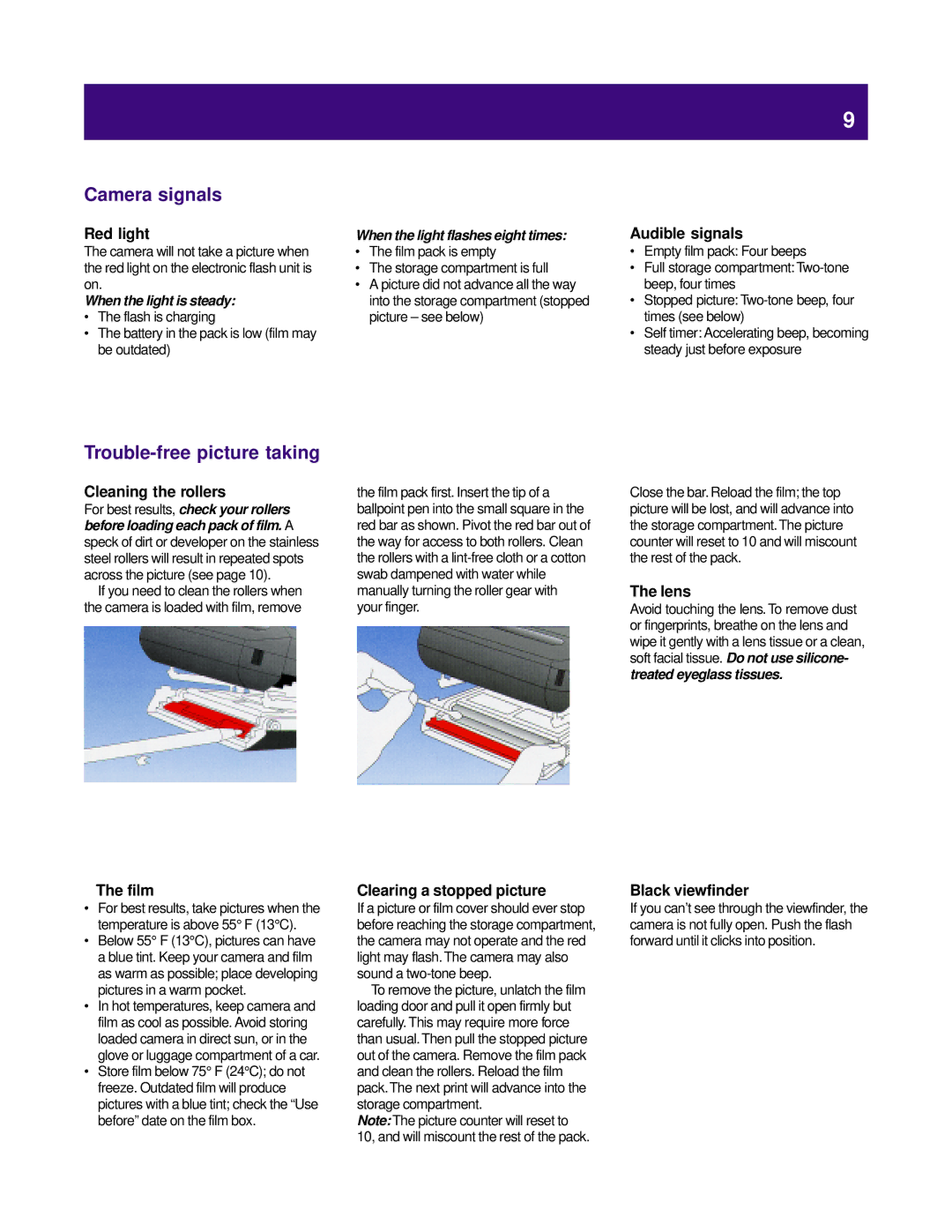captiva SLR specifications
The Polaroid Captiva SLR is a distinguished model that stands out in the realm of instant photography, combining the nostalgic charm of instant prints with the advanced features of a single-lens reflex (SLR) camera. Launched in the early 1990s, this camera represents a fusion of instant photography's immediacy and the versatility typical of traditional SLRs.One of the Captiva's main features is its innovative AutoFocus technology. This system allows users to capture images with precision, ensuring that the subject is always sharp and in focus. The camera employs a built-in flash and adjustable exposure settings, making it adaptable to various lighting conditions. The ability to tweak these settings empowers photographers to take creative control over their shots, a feature often missing in typical instant cameras.
Another notable characteristic of the Captiva is its compact size. Unlike traditional SLRs that can be bulky, the Captiva offers a more lightweight design while not compromising on functionality. This portability makes it a perfect companion for spontaneous photo opportunities, whether during a vacation, family gathering, or a casual outing.
The Polaroid Captiva SLR supports the Polaroid 600 film, which adds to the appeal of this camera for those who cherish the physicality of instant prints. The prints typically develop within minutes, allowing users to enjoy tangible memories almost immediately. The unique color saturation and distinctive border design of Polaroid prints contribute to the visual allure, making them prized keepsakes.
Moreover, the Captiva features a built-in motor that automatically ejects the photograph after the shot is taken. This convenience factor enhances the user experience, allowing photographers to focus on composition rather than the intricacies of manual film ejection.
In summary, the Polaroid Captiva SLR captivates instant photography enthusiasts with its blend of SLR functionality and instant print technology. Its AutoFocus system, compact design, adaptability in various lighting, and use of Polaroid 600 film underscore its practical, user-friendly appeal. As a model that embodies both nostalgia and innovation, the Captiva remains a beloved choice for those who cherish the unique experience of instant photography.

